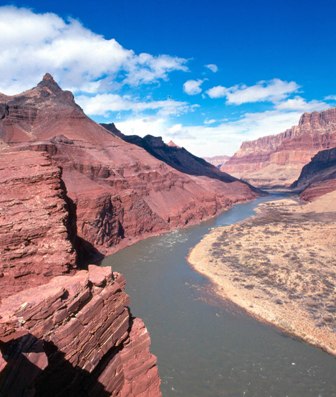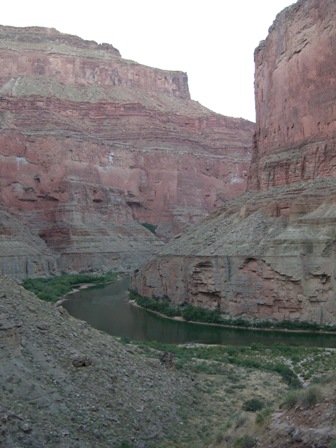
The Colorado River supplies water to approximately 27 million people in seven states and irrigates more than three million acres of farmland. In Southern California alone, it supplies 18 million Metropolitan Water District customers with 40 percent of their water.
So last year, when a study out of Scripps Institution of Oceanography reported that there’s a 50 percent chance that the Colorado River’s largest reservoir (and the largest reservoir in the United States), Lake Mead, will be dry by 2021, the news generated a lot of buzz.
But a new study out from the University of Colorado Boulder finds that despite a 10-year drought in the Colorado River system, the odds of draining the river’s delivery system before 2026 are pretty slim — below 10% in any given year. Researchers say this is primarily due to the massive reservoir storage capacity along the Colorado — more than 60 million acre feet, which includes Lake Mead. The reservoir system of the Colorado is currently at 59 percent of capacity, according to the study.
But the scientists predict that by mid-century, the Colorado could become less reliable unless water-management strategies change.
The researchers found that if climate change causes a 10 percent reduction in the Colorado River’s average stream flow as some recent studies predict ([PDF]), the chances of fully depleting the system’s reservoirs will exceed 25 percent by 2057. If there is a 20 percent reduction in stream flow, the chances of deleption rise to 50 percent.
“On average, drying caused by climate change would increase the risk of fully depleting reservoir storage by nearly ten times more than the risk we expect from population pressures alone,” said lead study author Balaji Rajagopalan in a press release about the study.
The authors of the study conclude that the magnitude of the risk will depend not just on the amount of drying the region experiences, but also the types of water management and conservation strategies that are implemented in the near future.
For the last decade, California’s annual use of Colorado River water has varied from 4.5 to 5.2 million acre feet.

One thought on “Threats to Colorado River Water Supply”
Comments are closed.

This is definitely an issue of great importance and there is some disagreement about when Lakes Mead and Powell will reach dead pool. The piece mentions population briefly- it is important to remember that future population growth is expected to be a larger driver of future water shortages worldwide than climate, but that doesn’t mean that climate isn’t also very important. The book ‘Dead Pool’ by J.L. Powell (an interesting coincidence) is a good read for those who have an interest.